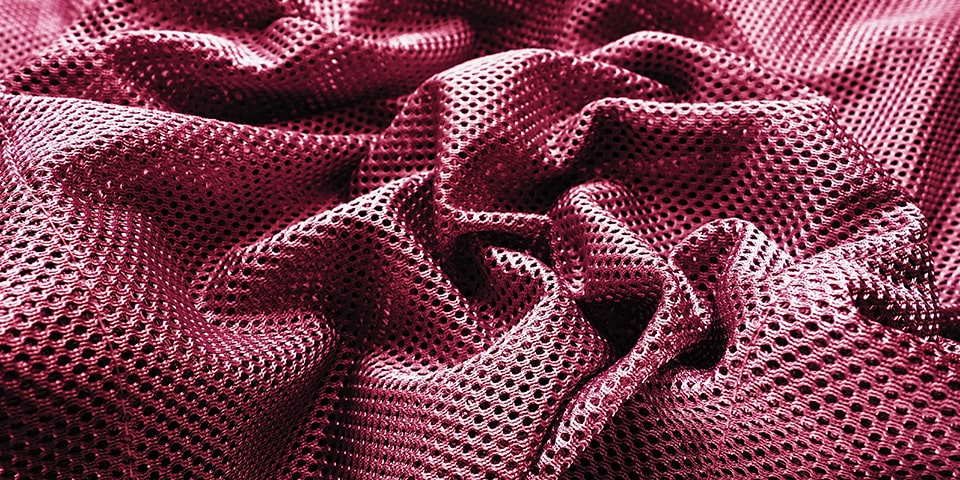

Neoprene and natural rubber are two common materials used to make different components. Finding the right material for the job is essential for maximizing the life span, durability and efficiency of each part. If you want to ensure your parts hold up to wear and tear, you’ll need to know the difference between neoprene and rubber.
Both neoprene and natural rubber have their own unique attributes that make them work for different jobs. After understanding what each material is and how it’s made, you’ll be able to match your needs with the best material. Let’s compare these materials to help you select the suitable medium for your operation.
Neoprene, or polychloroprene, is a synthetic rubber designed to mimic and enhance the qualities of natural rubber. Chloroprene is polymerized to make neoprene and comes in soft and hard varieties. This process makes neoprene highly resistant to water, temperature shifts, solvents and oil — its durability and resistance make it stand apart from other materials. Additionally, neoprene is soft and flexible making it the preferred material for packaging, medical and safety industries.
One of the most well-known uses for neoprene is wetsuits. Since neoprene is comfortable to wear and is highly weather and pressure-resistant, it’s ideal for diving purposes. Neoprene is also used as an electrical insulator in corrosion-resistant coatings. Its durability and flexibility make it ideal for medical use and in materials that see lots of wear in industrial and automotive uses.
Rubber is a versatile material found in hundreds of plants. The main source of natural rubber comes from rubber trees. Liquid sap is extracted from the trees and then mixed with ammonia and acid. Then, all remaining water is extracted. The extraction process allows the rubber to solidify into layers that are then processed and turned into various rubber and rubber products.
Natural rubber goes through a process called vulcanization to make it durable. Vulcanization involves heat-treating the rubber, which forms extra bonds in its molecules. The strengthened rubber is then treated and turned into various products. Natural rubber became harder to get, and with the invention of synthetic rubbers, it was used in fewer industrial applications. Both natural rubber and neoprene are excellent electrical insulators — both materials help prevent currents from traveling beyond their surfaces.
If you’re looking for the right rubber products for your business, you’ll want to consider several factors. Neoprene and natural rubber have a few differences that will affect the material you select. Let’s look at three significant factors that will affect the type of rubber you choose.
Natural rubber has a much lower temperature rating than neoprene. If you’re looking for a material that handles high heat well, neoprene is your best option. Additionally, neoprene has improved self-extinguishing and flame-retardant qualities. Natural rubber won’t hold up as well to the high heat conditions and is prone to melting in these situations.
Natural and synthetic rubber both have high durability. Natural rubber is extremely tough, making it excellent for strenuous uses. Once treated, it’s highly resistant to tearing and abrasion. Additionally, natural rubber has a high tensile strength, which makes it suitable for shock absorption and other regular contact uses.
Neoprene is not as durable as natural rubber when it comes to toughness. It has a similar tear resistance, high tensile strength and good elongation abilities when compared to natural rubber. For heavy-use applications, both neoprene and rubber will perform well.
While both materials are durable, neoprene is much more efficient for sealing applications. Its flex cracking resistance and high resilience makes it the superior option for rubber gaskets. Neoprene will withstand highly abrasive conditions much longer than natural rubber and many other materials.
After finding inadequacies in natural rubber and experiencing a rubber shortage, neoprene was invented to make up for some of natural rubber’s shortcomings. Natural rubber fails or weakens under certain light, temperature, chemical and oil-related conditions. Neoprene is used in situations where natural rubber cannot work.
Neoprene maintains its structure and strength even when encountering oil and petroleum products. Neoprene parts are also resistant to wear and aging, even when exposed to aging factors like ozone and sunlight. It’s capable of withstanding immense pressure and strain, which is why it’s used in wetsuits and medical gloves.
While material ability has a significant impact on the type of rubber you choose, the cost is often a critical factor for many projects. The improved durability, temperature resistance and material-resistances of neoprene make it much more expensive than other rubbers. The manufacturing process and high strength of neoprene will increase the cost of any project you use it for. However, in return, you receive a rubber that can better handle extreme conditions with ease.
Neoprene is a synthetic rubber. Latex is found naturally in rubber, but it can be created synthetically as well. The term “latex” refers to any mixture of polymer microparticles in water. The milky white latex liquid is harvested and turned into natural or synthetic rubber products, including latex gloves and clothing. The term “latex” often refers to this unprocessed liquid or non-vulcanized — non-heat-treated — rubber. Neoprene is a synthetic, treated rubber.
Silicone is a polymer made from siloxane. Silicone rubbers, like neoprene, are also highly resistant to extreme temperatures and environments. Its resistance makes silicone popular for cooking equipment, medical devices and more. While silicone is temperature-resistant like neoprene, it’s not able to stand up to oils, petroleum products and other chemicals.
Both silicone and neoprene hold up well against sunlight and aging, making them good options for parts exposed to heavy wear. However, silicone is not as tear-resistant as neoprene. Neoprene has high tensile strength and abrasion — it’s better at flexing and handling rough contact. Silicone can be a lower-cost alternative to neoprene as it also has good tensile strength, as long as the material isn’t needed in abrasive conditions.
For decades, American Micro Industries has delivered high-quality, made-to-order parts for military, electronic, defense, aerospace, technology and marine industries across the country. With a customer-oriented, efficiency-focused production, we can provide your business with the parts you need when you need them. Our processes adhere to the strictest quality standards, ensuring your components are made to the specifications you want. From small fabricated parts to electrical insulators, we can manufacture your unique pieces.
If you’re interested in ordering a custom component, contact us online to request your free quote today. We have in-house manufacturing capabilities, in-stock components and bulk options to help you meet your project needs.